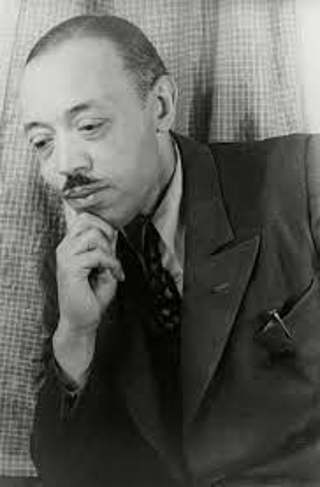
William Grant Still Symphony No. 1., "Afro-American"
On October 29th, 1931, The Rochester Philharmonic presented the world premiere of a new symphony by the composer William Grant Still. A symphonic premiere is always something to look out for in musical history, but this one had an even greater significance. The premiere of Wiliam Grant Still's First Symphony, subtitled "Afro American," was the first time a symphony written by a Black American composer was performed by a leading orchestra. William Grant Still was a man of many firsts, whether he was the first Black American conductor to conduct a major orchestra, the first to have an opera performed by a major company, the first Black American to conduct an orchestra in the South of the United States, and much more. Today we're going to focus in on Grant Still's first symphony, a piece that Grant Still had long thought about, conceptualized, and dreamed of. It was also a symphony wrapped up in the roiling currents of Black America at the time, with the Harlem Renaissance in full swing and Alain Locke's tract The New Negro sparking discussion and debate all over the country. It was a symphony that attempted to do something no one had ever done before, that is, to marry together the genre of the Blues with that of symphonic music. At the time of its premiere and afterwards, it was quite a success, and until 1950, it was THE most performed symphony written by an American composer. After 1950, the symphony practically disappeared from concert stages, but due to the explosion of interest in Black American composers of the past and present, this brilliant symphony is making its way back into the repertoire of orchestras all over the world. The way that Grant Still constructed this meeting of two genres of music was ingenious and innovative from start to finish, and so today on the show we'll explore all of the historical context of the symphony, what Grant Still was trying to do with his monumental new endeavor, and of course, all of the music itself. I'm also joined today by the great writer and linguist John McWhorter, who discusses the 4 Paul Laurence Dunbar poems Grant Still added to each movement as epigraphs, as well as their cultural context. Join us!
12 Okt 20231h 6min

(Part 2) - The Music of World War II and the Holocaust with "Time's Echo" writer Jeremy Eichler
This is another episode where I highly recommend listening to Part 1 from last week before listening to this episode! It was a great honor to speak with the critic and cultural historian Jeremy Eichler about his remarkable new book "Time's Echo." In today's episode, we speak about Richard Strauss' Metamorphosen, as well as the complicated and hotly debated questions about Strauss' activities during World War II. We also talk about Shostakovich and his 13th Symphony, entitled "Babi Yar," a piece of memorial for a place where no memorial had stood for decades. Finally, we speak about Benjamin Britten and his War Requiem. We talk about Britten's devout pacificism, about his visit to the Belsen Displaced Persons camp after World War II, and why his War Requiem seems to have more connection with World War I than with World War II. It was truly a joy to talk to Jeremy about all of these different great composers, as well as the memories they created with their works. Join us!
5 Okt 202355min

The Music of World War II and the Holocaust with "Time's Echo" writer Jeremy Eichler (Part 1)
I had the great pleasure and honor this week(and next week) to speak with the author of the new book Time's Echo Jeremy Eichler. The book chronicles four composers and their varied reactions to World War II and the Holocaust, including Schoenberg, Strauss, Shostakovich, and Britten. This week we talked about the historical symbiosis between Germans and German Jews, the concept of Bildung, a central idea in German culture throughout the 19th and early 20th century, Mendelssohn's role in creating a sense of "German" music, Schoenberg's remarkable prescience about what lay in the future after the Nazis took power in Germany, his remarkable Survivor from Warsaw, the first major musical memorial to the Holocaust, and the almost hard to believe it's so wild story of the premiere of the piece. This is truly one of my favorite books about classical music that I've ever read, so I highly recommend picking it up. I hope you enjoy this interview as much as I did!
28 Sep 202357min
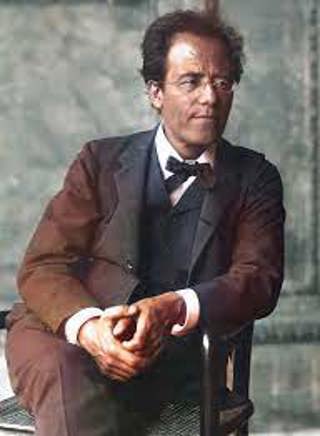
Mahler Symphony No. 4, Part 2
If you haven't listened to Part 1 of this episode about Mahler's 4th symphony, I highly recommend doing that, as every movement of this symphony builds to the "Heavenly Life" of the last movement. On Part 2, we'll be going through the 3rd and 4th movements. Mahler told his friend Natalie Bauer-Lechner that the 3rd movement of the symphony was created by "a vision of a tombstone on which was carved an image of the departed, with folded arms, in eternal sleep." As you can imagine based on that description, there is an unearthly beauty to the slow movement of Mahler's 4th. Much like the Heiliger Dankgesang movement from Beethoven's Op. 132 string quartet I talked about a couple of weeks ago, we often get the feeling in the slow movement of Mahler's 4th that we are listening to music that is coming to us from the other side. As the slow movement comes to its end, we are introduced to the last movement, a sublime and peaceful song Mahler entitled "The Heavenly Life." This is a symphony that leaves you in a state like no other in the musical world, and so today we'll go through that slow movement, investigating just how Mahler makes it so extraordinary, and then we'll talk about the last movement, a movement that has divided listeners from the beginning due to its unusual text. I can't promise we'll find all the answers, but along the way, we'll get to listen to some truly divine music. We'll also get to hear Mahler himself playing - that's right, Mahler himself! Join us!
21 Sep 202359min
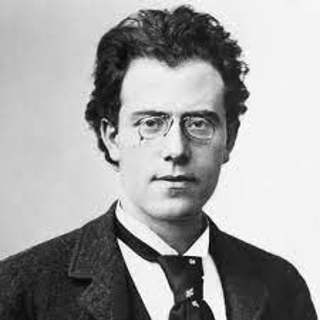
Mahler Symphony No. 4, Part 1
After the truly heavenly slow movement of Mahler's 4th symphony, a soprano emerges and sings a song literally called "The Heavenly Life." It is a symphonic ending like no other, one that leaves the listener peaceful and contented after taking a long(but not as long as usual) and winding journey with Gustav Mahler and his 4th symphony. The 4th symphony is a symphony of moments, like the famous sleigh bells that begin the piece, and a symphony of long, massive, and momentous arcs, like in the timeless 3rd movement, which might be my single favorite movement of any Mahler symphony. But this symphony, so renowned for its contentedness and beauty also features complicated emotions, drama that clouds the blue skies, and a dark side that we never truly escape, perhaps not until the very end of the symphony. Mahler said that his symphony was "divinely serene, yet profoundly sad, it can only have you laughing and crying at the same time." What a perfect way to define Mahler's music, always full of dualisms, contradictions, ironies, and complexities, but that's what makes Mahler's music so irresistible; its ability to plumb the depths of not only the human spirit but also its psyche. Mahler's music is truly musical therapy, and if there's one of his symphonies that really exemplifies that, it's this fourth symphony. With all that said, this is also his simplest and most easily grasped symphony in terms of its purely musical content. I've gotten a lot of emails in the past from folks who are skeptical or confused about Mahler and his appeal, so if you're one of those people, than this symphony MIGHT just be the one that changes your mind. As always with Mahler, his symphonies get multi-part episodes, so this week I'll go through the first two movements of the symphony, from the sleigh bells and brilliant sunshine of the first movement, to the devilish and ironic second movement. We'll talk all about Mahler's brilliant orchestration, his use(and deliberate misuse) of form, the pure beauty of this music, and the oddly negative reception that this symphony got when it was first performed. Join us!
14 Sep 202351min
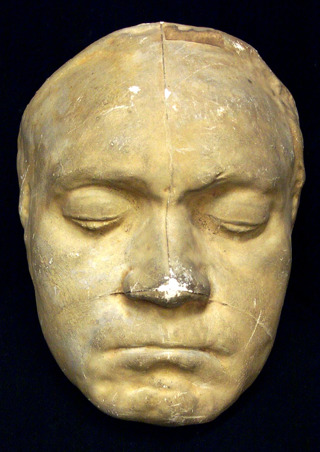
Beethoven String Quartet, Op. 132, Part 2
If you joined me last week, you heard about the severe intestinal illness that Beethoven suffered from during the year of 1825. Beethoven thought that he was near death; he was spitting up blood, in terrible pain, and regularly begged his doctor for help. Ensconced in Baden, a Viennese suburb known for its nature and calm, Beethoven slowly and miraculously recovered from the illness, giving him 2 more years to compose. These two years brought us the quartets Op. 130 Op. 131, Op. 135, a series of canons, sketches for a 10th symphony. and of course, Op. 132. Obviously, even as he suffered from this illness, Beethoven knew that he had much more in him left to compose. The 4 quartets he wrote upon recovery from this illness ALL rank in the top 10 of the greatest musical compositions ever written by anyone. During the slow movement of Op. 132, Beethoven takes the opportunity to thank the Deity, who or whatever that was to Beethoven, for his recovery. This 15-20 minute movement is, as I said last week, beyond superlatives, but I'll do my best to quell my enthusiasm and look at this movements structure, its fascinating harmonic language, and of course, its spiritual dimension. We'll then take apart the final two movements of the piece, two movements that teach us so much about Beethoven as a composer, as a person, and as a performer. No piece of Beethoven's struggles for so long before finally reaching a glorious conclusion, but don't worry, we'll get there in the end. Join us to explore part 2 of one of the greatest masterpieces of music ever written!
8 Sep 202344min
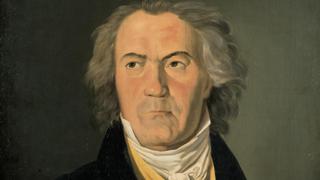
Beethoven String Quartet, Op. 132, Part 1
I had long hesitated to write a show about any of Beethoven's late string quartets. These are pieces that professional quartets spend the better part of their careers grappling with, struggling with, failing with, and much more rarely, succeeding with. They are some of the most extraordinary pieces of art ever conceived of. 5 quartets, Opus 127, Opus 130, Opus 131, Opus 132, and Opus 135, all written near or at the end of Beethoven's life, arguably representing the pinnacle of everything Beethoven achieved. They explore not only every conceivable emotion, but they dig down into the core of those emotions, defiantly refusing to skim the surface and daring to ask and then answer the fundamental questions of life and death. Everyone has a favorite Late Beethoven Quartet, but mine has always been Opus 132, and so this week I'm taking the opportunity to take the leap into Late Beethoven. We'll discuss Beethoven's situation as he recovered from a life-threatening illness which he was sure was going to be his end, the unusual 5 movement structure of the piece, and this week, the first two movements of the quartet, the first of which, to me, defines everything that Sonata Form can do to express emotion and a narrative in a piece of absolute music. Join us!
31 Aug 202345min

Nielsen Symphony No. 4, "Inextinguishable"
At the top of the score for the Danish composer Carl Nielsen's 4th symphony, he wrote: "Music is life, and like it, inextinguishable." This could easily be the shortest podcast I've ever done. I could leave you with that quote and then play you the beginning of the symphony, and you would understand everything Nielsen wanted to portray in this remarkable music. But don't worry, I won't do that. Carl Nielsen's music has never quite made it into the standard standard repertoire, but if there is one piece of his that is played more often than any other, it is his 4th symphony, subtitled The Inextinguishable. But as a whole, Nielsen's 4th symphony is not easy to digest. It is a piece that is contradictory, in the sense that Nielsen uses an extremely small set of motives to write practically every note of music in the score, and yet sometimes the music can feel like a stream of consciousness. Nielsen himself wrote: "I have an idea for a new composition, which has no programme but will express what we understand by the spirit of life or manifestations of life, that is: everything that moves, that wants to live ... just life and motion, though varied – very varied – yet connected, and as if constantly on the move, in one big movement or stream. I must have a word or a short title to express this; that will be enough. I cannot quite explain what I want, but what I want is good." There is a James Joyce-esque sense of jump-cutting between different ideas, as if that inextinguishable life force is unaffected by earthly things like form and recognizable structure. But if you peek under the hood of this piece, you find that it is really in 4 movements, and the first movement is even in a kind of a Sonata Form. It has an intermezzo, a slow movement, and a rambunctious finale. In many ways, this is a conventional symphony, but in terms of the musical material and the way Nielsen decided to manipulate that material, it is anything but conventional. We'll talk about all of this today, including the influence of World War 1 on the symphony and on Nielsen himself, and the remarkable music that throws us along like a relentless and boundless current of energy. Join us!
24 Aug 202359min






















